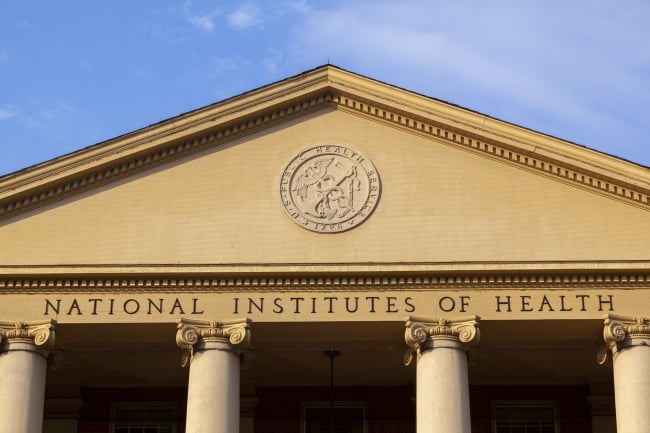You have /5 articles left.
Sign up for a free account or log in.

Grandbrothers/iStock Editorial/Getty Images Plus
There was a moment during World War II when President Roosevelt summoned Vannevar Bush to the Oval Office. Bush was director of the Office of Scientific Research and Development and a close Roosevelt ally. It was 1944 and becoming increasingly clear that the Allies would achieve victory in Europe.
“What’s going to happen to science after the war?” FDR asked Bush.
“It’s going to fall flat on its face,” Bush said.
“What are we going to do about it?” Roosevelt asked.
Bush was characteristically blunt: “We better do something damn quick.”
Some 80 years later, that message is just as urgent.
The fundamental relationship between our nation’s research universities and the federal government was established during the greatest crisis the world had seen. Roosevelt and Bush understood that scientific resources in American universities should be mobilized to help win the war against fascism.
And win it they did, with the development of vaccines and blood substitutes to keep troops healthy and technologies like radar, aeronautical innovations and the atomic bomb.
One of the critically important decisions made during the lead-up to the war was that the National Defense Research Council would not centralize war research in government-controlled laboratories, but instead would place contracts for research with individual scientists and their universities.
The practice held appeal for university presidents not only because the faculty would stay in place, but also because the council reimbursed universities for both direct costs of research and indirect costs for facilities and administration. In fact, the idea was to use these reimbursements to lure universities to undertake research on behalf of the federal government. The war was dire and help from the best scientific minds in the country was essential.
During the war, there were debates about indirect costs. But by its conclusion, the established policies and practices regarding the relationship between the federal government and universities were solidified.
The results of this partnership, especially via growth in Defense Department research spending, the expansion of the National Institutes of Health and the establishment of the National Science Foundation and National Aeronautics and Space Administration, have been nothing short of astounding.
America’s research universities, and by extension our higher education system, are the best in the world.
Students worldwide know our universities are the best and are willing to pay to attend them for the best possible education.
Why do our scientists win more Nobel Prizes?
Because as a nation we’ve invested in research.
Why have nearly all corporations shed their basic research and rely on the universities?
Because they know high-quality basic research can be done more cheaply on campuses than in a corporation.
This collaboration created the internet, put a man on the moon, ended polio in the U.S., blunted the scourge of AIDS and put the world in the palm of our hands with the smartphone.
There is no other partnership like this on the planet.
And we are at risk of undermining it with shortsighted thinking.
As a nation, we must do something “damn quick” about a partnership threatened by slash-and-burn budget cuts and a discounting of science that is nothing less than a dismantling of eight decades of resounding success.
The major threat is a move to artificially limit indirect cost reimbursement to balance the budgets of agencies that support university research. Twenty-two states filed suit Monday to block this action, and rightly so. A federal judge temporarily halted the change in those 22 states in response to the suit.
Indirect costs are the facility and administrative expenses universities incur while conducting work funded by the NIH, NSF, NASA and other agencies.
The federal government strictly limits what can be requested as direct research funds. Universities cannot charge heat, light, waste disposal, animal care infrastructure or regulatory compliance costs as direct costs. This despite the fact that the university must spend money on these essential costs to carry out the research.
Each university negotiates its indirect costs rate based on building costs, personnel and regulations that apply to animal and human research.
The current Trump administration has seized on limiting indirect cost reimbursement to 15 percent as a significant way to cut the budgets of our federal research agencies.
This would be a catastrophic blow to research universities. Groundbreaking science at universities simply cannot happen if they cannot recover the costs of electricity, laboratory space and other indirect costs necessary for research.
It amounts to a surrender of our global dominance in innovation. Because for most universities, the only ready source of additional revenue is tuition from students. And I have never felt it was fair to charge students for research solicited by and conducted for federal research agencies. I believe students and parents would agree with me.
Furthermore, these kinds of ill-informed proposals ultimately stunt our ability to make higher education accessible and affordable, sidelining millions of future American innovators and creators.
By cutting indirect costs, the federal government will force universities to scale back research that may help develop the next vaccine or cure, or the next technological innovation that will create new businesses or help secure our country.
Universities are committed to transparency, careful stewardship of taxpayer dollars and quality research and training.
While the current system of indirect costs is complex, it has endured. It is integral to a partnership that has brought enormous benefits to the people of our country and the world.
We absolutely must protect it.








